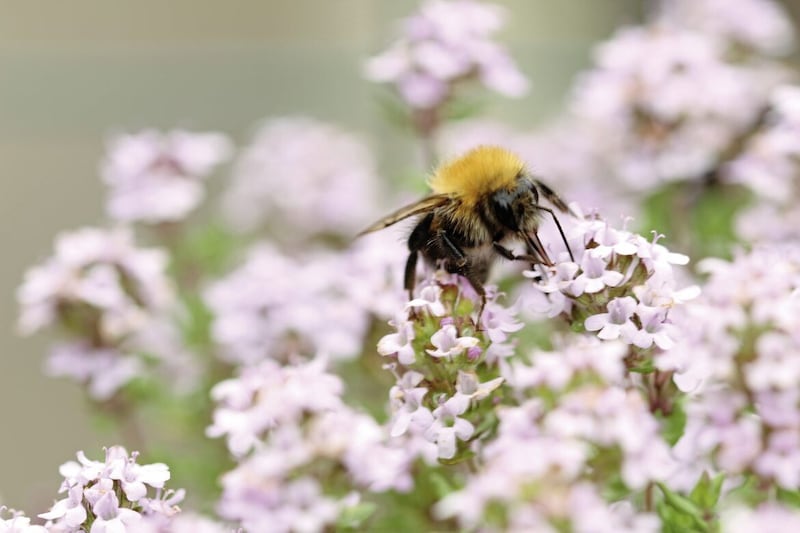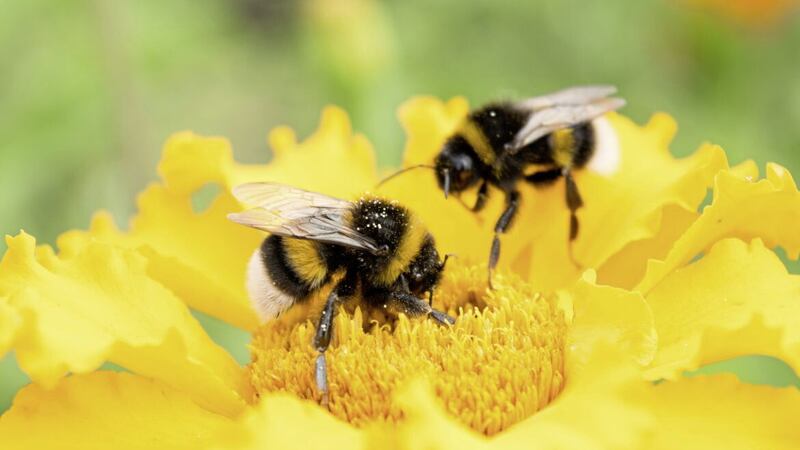I'VE been encouraged by some fantastic dandelion displays on verges that are usually among the first mowed. It's unclear whether this is a deliberate, proactive policy of small scale rewilding on behalf of the authorities or merely old fashioned neglect but it's nonetheless very welcome. Dandelions, and likewise daisies, provide an early food source for a range of pollinators. These two plants in particular were once vilified by gardeners, especially those who believe that at the heart of every garden there should be a large swathe of manicured, emerald green grass. But, as hopefully indicated by the stay of execution for those roadside dandelions, attitudes are changing, though not before time.
Earlier this year, the European Union announced proposals to try to reverse an "alarming decline" in the number of bees and other insects that pollinate crops. It's estimated that pollinators – mostly bees, but also hoverflies, moths, and some beetles and other insects – contribute around €5 billion (£4.41bn) a year to the bloc's food production. Yet intensive farming practices, pesticides, pollution, changed land-use, other introduced species and climate change have all taken a serious toll on their populations. A third of Irish bee species are threatened with extinction, with bumblebee populations plummeting year-on-year as hedgerows, ditches and verges are removed, poisoned or cut to within an inch of their lives. This column has been trying to create a minor buzz about the threat to Ireland's bee population for a decade or more and in that time there's definitely been an increased awareness of the bee's key role in food production and the catastrophic impact its extinction would signal.
It's naive to think that gardeners alone can arrest the decline of these key species but that shouldn't stop us from doing what little we can to create a pollinator-friendly habitat. Choice of plants is obviously crucial and this is as much about what to avoid as what you should opt for. Colourful bedding plants of the sort you buy already in flower should be avoided at all cost. Raised in huge Dutch glasshouses, using peat and dosed with neonicotinoids, these are of no use whatsoever to pollinators and are more likely to kill than save them. Native plants are obviously best, as they have evolved alongside our indigenous insects. The likes of foxglove, honeysuckle, scabious, teasel and comfrey will soon have your garden buzzing like a midsummer meadow. If these are a little too 'wild' for your tastes, go for tried and tested cultivars such as lavender, hollyhocks, delphinium and geraniums. Simple single flowers are best for bees, as they tend to contain more pollen and nectar than exotics or plants with elaborate blooms.

In addition to choosing the right plants, it's important to create a habitat that's conducive to pollintors. In common with all creatures, bees and other winged insects need to drink, so try to ensure you have some water available, even if it's just a half barrel or bird bath. Add pebbles to the edges enabling them to land and drink without the risk of drowning. Unlike honeybees, most Irish bee species bees are solitary and tend to lay their eggs in the sheltered areas, such as the cavities of hollowed perennial stalks, in holes in rotten wood or underground beneath leaf litter. Create log piles and allow ivy to grow on dead trees to create habitats. While purpose-built bug hotels and insect houses are available, it's much more fun to create your own using prunings from the garden.






